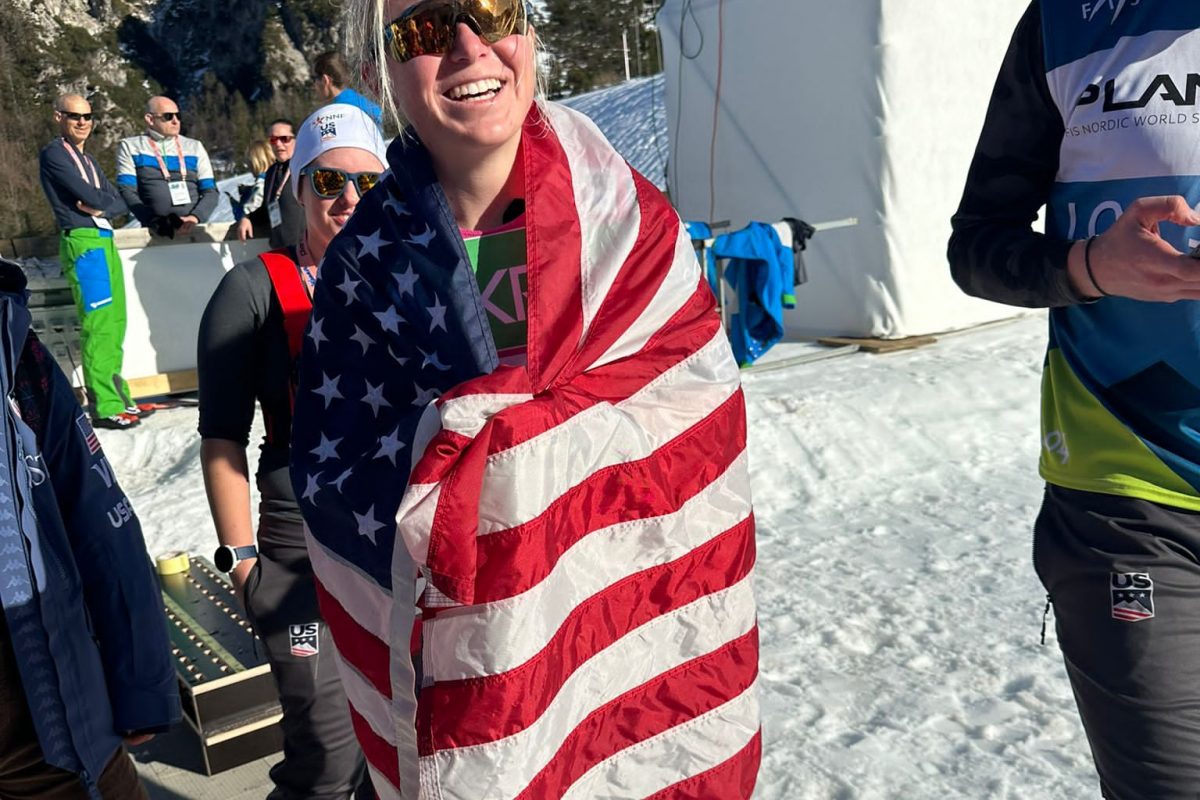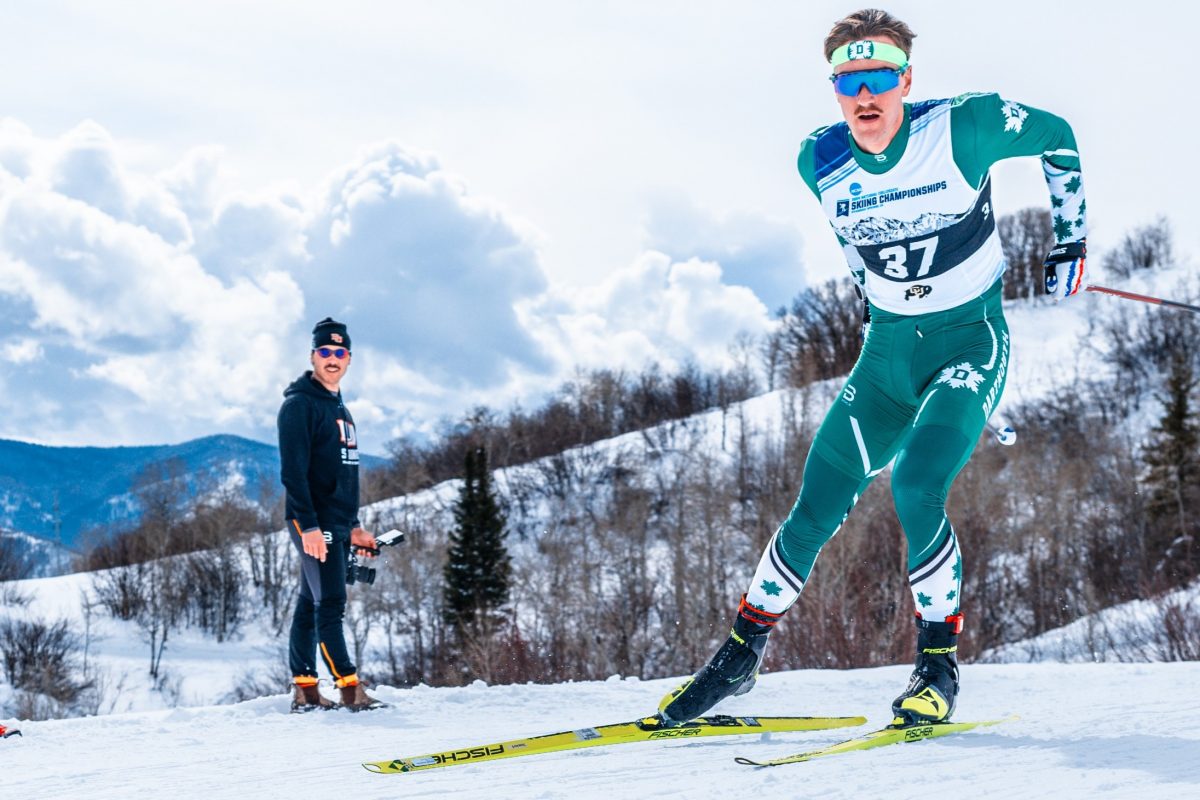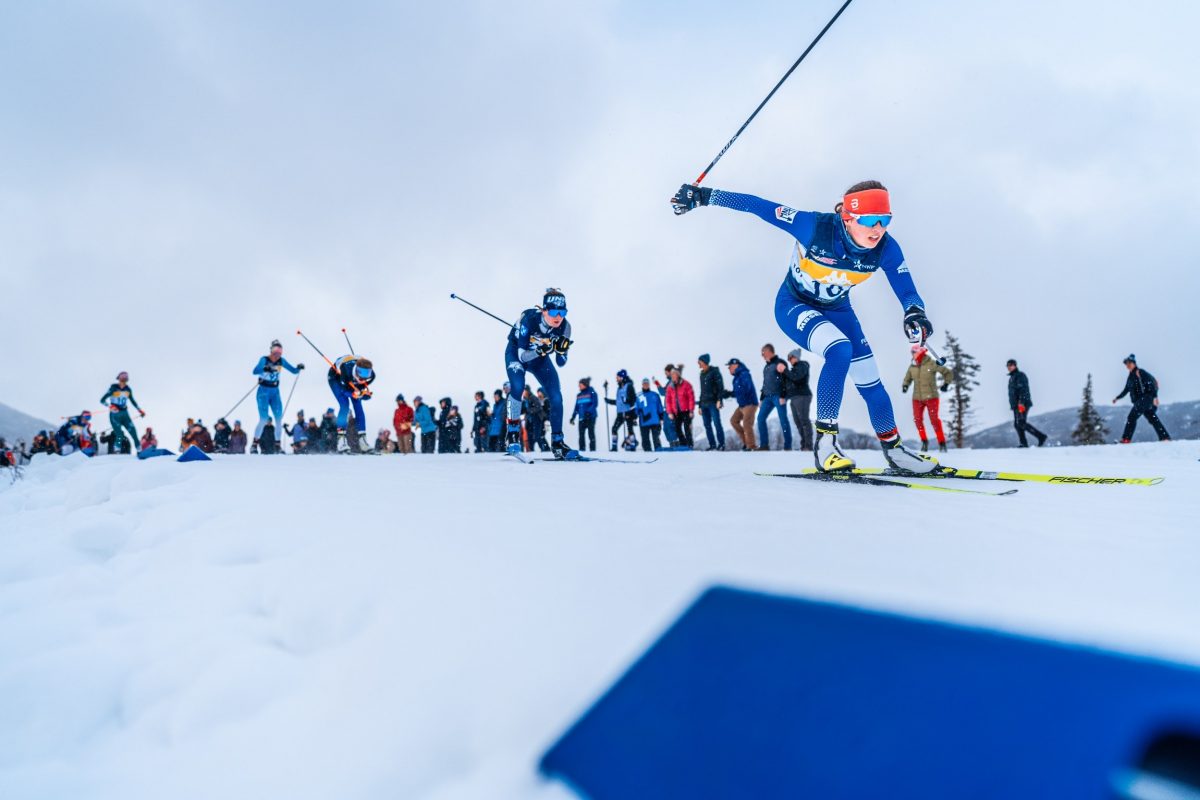Our recent series on biathletes facing the question of when and whether to go to college (parts one, two, and three) produced more interview material than we could fit into the three-part sequence, but we wanted to share a few more of the ideas with you anyway. What do biathletes do if they miss a target in a relay? They use a spare round. This week, we’re presenting you with short briefs on a few lingering topics.

Earlier this spring Jonne Kahkonen, the women’s coach for biathlon’s U.S. national team, expressed frustration that star athlete Laura Spector was returning to school for the summer after a disappointing season and did not seem to plan on joining the national team program in Lake Placid.
It was not an unreasonable sentiment: without actually seeing an athlete, a coach’s job is certainly much harder. And as a European (Kahkonen is originally from Finland), the concept of athletes going to college or getting a postgraduate degree while still focusing on their sport at a high level is likely somewhat unfamiliar.
But at the end of his interview with FasterSkier, Kahkonen said something else. He said that he understood.
“What I always say is that if you want the top result, then you need to do biathlon 100%, but at the same time biathlon is only a part of life and you have to be happy doing biathlon,” Kahkonen explained. “It’s sometimes a tricky combination, but that’s why I want to give all the information and all the support that I can give, and then the final decision is up to the athlete.”
His words echoed what other U.S. Biathlon Association (USBA) staff had told FasterSkier over the course of several months: going to college isn’t ideal from their point of view, but if it’s what will make their athletes happy, then so be it.
For example: here’s USBA President and CEO Max Cobb.
“Obviously, if the coaches could design the perfect progression for an athlete, irrespective of all other factors, having them spend 50 hours per week on their studies probably wouldn’t be part of the perfect progression,” he told FasterSkier last fall.
The staff and coaches are also limited by the reality of biathlon in the U.S. Cobb pointed out that with so few serious biathletes, that the team is obligated to work with the top athletes regardless of whether it agrees fully with their choices or not.
“If they make the decision to try to go to a university, then I think we’re obligated to try to make a solution so that they can still do that and still be a biathlete,” Cobb said. “We have to partner with them in a way that works for them and keeps a balance of their Olympic aspirations and their whole life aspirations together, and we’ve seen great dedication in the athletes who try to balance school and training.”
And as former development coach James Upham explains, the junior level is actually where the U.S. field is the least strong, meaning that college-educated athletes are actually an important group for the program to court.
“We’re really only getting one elite-level junior every couple of years,” Upham said in an interview. “You need to have a couple of them in the program all the time.”
As a result, national team coaches can end up working with athletes who come into the program in their mid-20’s, after college, even though they’d rather work with those athletes continuously all the way from the junior national team.
“The Europeans that are coming in at the national team level say, ‘well, yeah, I can take a nice engine at 22, but if I can take it at 16 I want it at 16,’” Upham said. “But we’re just not designed that way as a nation right now. We all recognize that and understand that … I think in general in nordic sports, you have to assume that Americans are going to develop later because there aren’t that many programs pushing you all the way through from being a teenager all the way up through the Olympics.
Head coach Per Nilsson, for instance, is from Sweden, where top biathletes do not generally make time for school, and said that it would be extremely difficult for U.S. racers who took a break for college to compete with those fully-dedicated Europeans.
“If we are looking at the top international biathletes, the level is so high that you cannot give a way three or four years with less training if you want to compete against these guys,” Nilsson told FasterSkier. “Then it would take you some time to close that gap back up again.”
The ultimate solution to the problem? Nilsson had a novel idea: embrace college and bring it into the biathlon fold.
“What would be optimal would be to have college on the college circuit, but that probably won’t happen,” he laughed. “But for the development of North American biathletes that would have been just great. I would love to see that in the future.”



